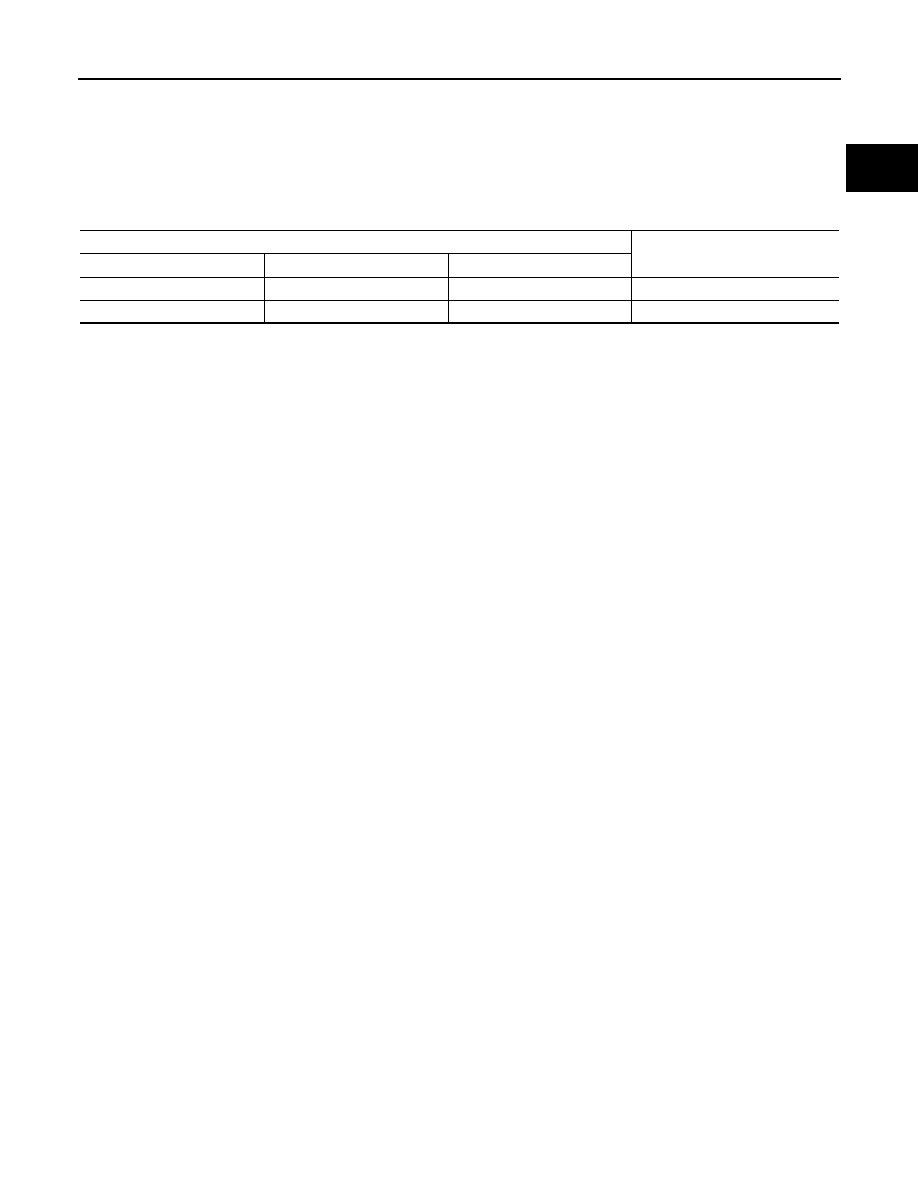Nissan March K13. Manual - part 137

APPLICATION NOTICE
EC-9
< HOW TO USE THIS MANUAL >
[HR12DE (TYPE 1)]
C
D
E
F
G
H
I
J
K
L
M
A
EC
N
P
O
HOW TO USE THIS MANUAL
APPLICATION NOTICE
How to Check Vehicle Type
INFOID:0000000006022900
Check the vehicle type to confirm the service information in EC section.
NOTE:
• L-jetronic is a fuel injection control method that the mass air flow sensor mounted on the air cleaner case
directly measures air volume taken into the engine (cylinder) and determines the fundamental fuel injection
amount.
• D-jetronic is a fuel injection control method to calculate air volume taken into the engine (cylinder) and deter-
mine the fundamental fuel injection amount, based on a throttle angle and an intake air pressure calculated
by the manifold absolute pressure sensor mounted on the intake manifold.
Vehicle type
Service information
Destination
Transmission
Engine control
For Thailand
M/T
L-jetronic
HR12DE (TYPE 1)
Except for Thailand
A/T, M/T
D-jetronic
HR12DE (TYPE 2)